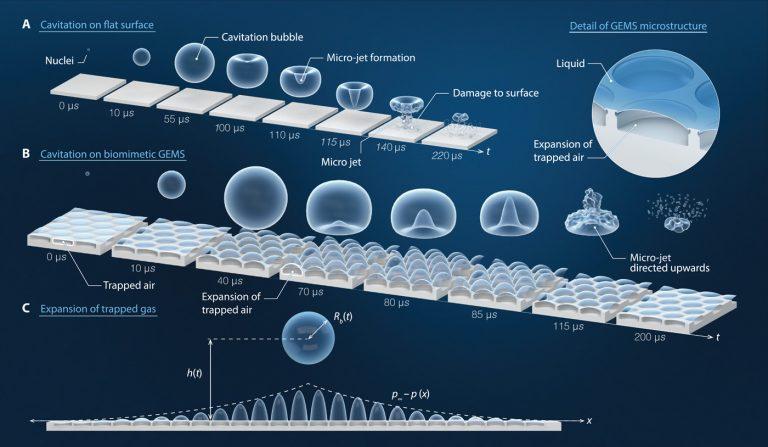Principle of ultrasonic cavitation fanyingsonic.com
Cavitation action refers to the action of local high pressure, high temperature, discharge, luminescence or shock wave due to the formation of holes in the liquid. Cavitation can be obtained by ultrasound, because ultrasound has a high frequency and high energy, and can produce a large number of small cavities when propagating in the liquid. These cavities exist for a very short time, and when they suddenly contract, huge pressure of up to thousands of atmospheres will be generated in the liquid, which will generate a large amount of heat energy, forming local strong pressure and high temperature, enough to cause chemical changes in the liquid.
The three stages of cavitation
Cavitation is a unique phenomenon of liquid, which occurs in the low pressure area inside the liquid, especially at the interface between liquid and solid. Traditionally, cavitation is a phase transition process between liquid and vapor, including three stages: generation, development and disappearance.
1. The generation stage is called "cavitation initiation", accompanied by a substantial rise in noise radiation;
2. The disappearance stage is called "cavitation collapse", which releases huge pressure and heat energy, which may cause damage to materials, and may also be used to serve a variety of industrial engineering;
3. Between the birth and collapse is the stage of cavitation development, called "cavitation development", it is mainly to interfere with the movement of the cavitation object, so that the force has changed, such as thrust decline, component vibration, etc., in some cases can also reduce drag, and even reduce the resistance coefficient by an order of magnitude.

Ultrasonic cavitation
Ultrasonic cavitation means that the tiny bubble core in the liquid vibrates under the action of ultrasonic waves. When the sound pressure reaches a certain value, the bubble will expand rapidly, and then suddenly close, resulting in shock waves when the bubble closes. This kind of expansion, closure, oscillation and other dynamic processes. All liquid related ultrasonic treatment techniques are powered by ultrasonic cavitation.
Because the ultrasonic cavitation process is very complex, involving acoustics, chemistry, optics, fluid mechanics and other disciplines, and in practice, it is impossible to separate the cavitation effect from the mechanical effect and the photoelectric effect. The physical, chemical and biological effects caused by cavitation have very specific properties, which have important theoretical value and great application potential. For example, the collapse of a cavitation bubble will produce microjets in the very small space around the cavity and radiate cavitation noise. The high temperature and high pressure generated by the cavitation collapse can be used for cleaning, cutting, breaking objects, improving the surface properties of materials, strengthening the process, etc. Ultrasonic cavitation has become a hot topic in current research.
Cavitation occurs
When a liquid is treated with high intensity ultrasound, sound waves propagating into the liquid medium create alternating cycles of high pressure (compression) and low pressure (sparse), the rate of which depends on the frequency. During the low-pressure cycle, high-intensity ultrasound creates small vacuum bubbles or voids in the liquid. When bubbles reach a volume that can no longer absorb energy, they collapse violently in a high-pressure cycle, a phenomenon called cavitation. During the explosion, very high temperatures (about 5,000K) and pressures (about 2,000atm) will be locally reached. The collapse of the cavitation bubble also causes the liquid jet to reach speeds of up to 280m/s, and the resulting shear forces mechanically break the cell membrane and improve material transfer. Depending on the ultrasonic parameters used, ultrasound can have a destructive or constructive effect on the cells, depending on the ultrasonic parameters used.

29 Feb 2024
Share